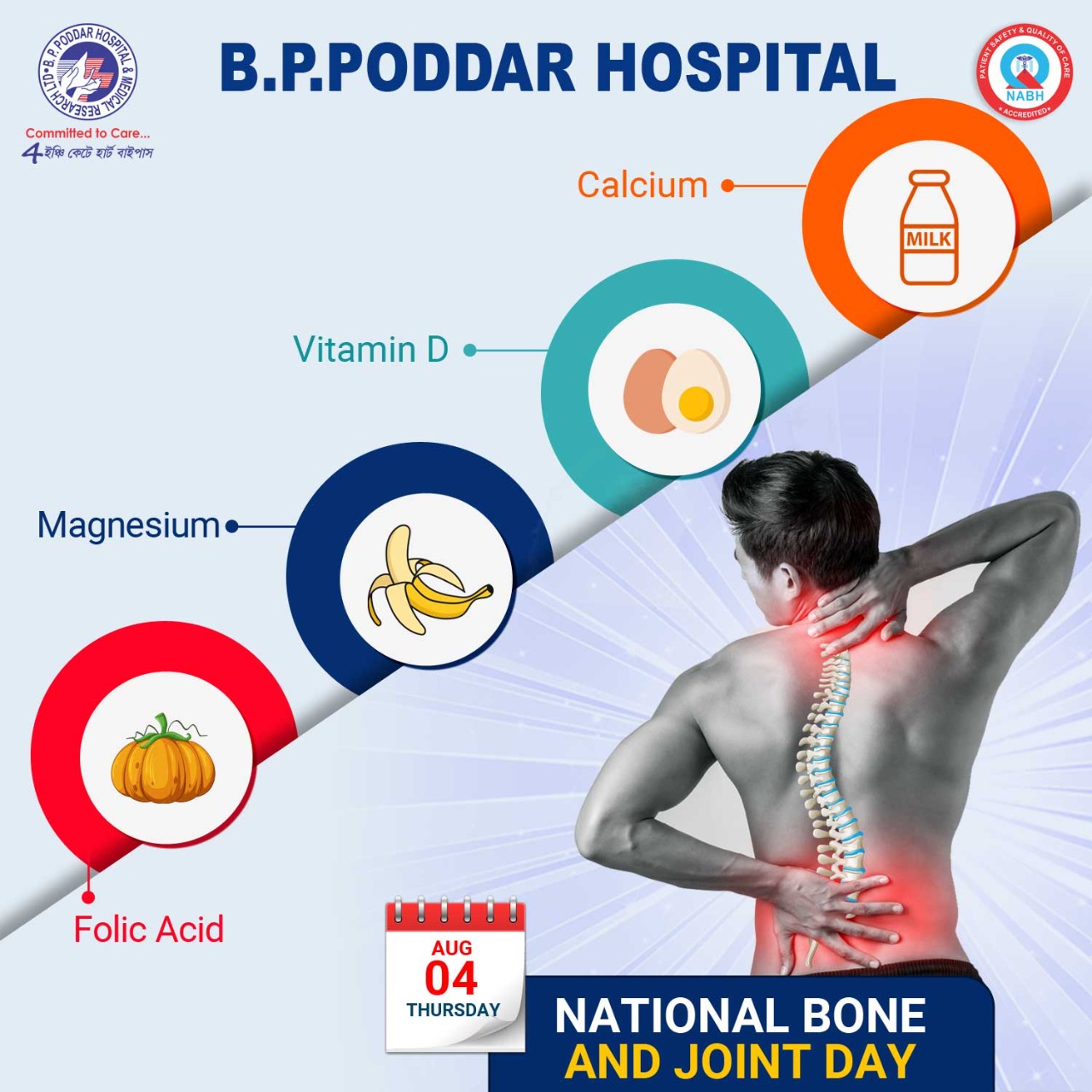
 National Bone and Joint Day 2022
2 August, 2022
Adults frequently complain of joint pain, which is typically brought on by regular wear and tear from daily activities including walking, bending, standing, and lifting. Running and sports involving jumping or fast pivots increase the risk of knee pain and other related issues in athletes. But whether joint pain is brought on by ageing or an injury, it can be bothersome and even crippling in some cases.
Common joint pain typically manifests in the hands, foot, hips, knees, or spine. Pain may be ongoing or intermittent. Joint pain can sometimes be described as discomfort, inflammation, soreness, stiffness, or pain. Joint discomfort can be acute (lasting only a few days) or chronic (lasting more than three months). The joint may occasionally feel stiff, achy, or sore. A searing, throbbing, or "grating" feeling is reported by some patients and furthermore the joint could be stiff in the morning but get looser and feel better with activity.
Causes –
- Sprained or strained knee ligaments or muscles- Those who have had any joint injuries or repeated overuse of the muscles.
- Another cause of stiffness and painful joints is age. This results in the strain and wear and tear of the joints.
- Osteoarthritis- a prevalent type of arthritis which develops over time when the cartilage (the protective cushion in between the bones) wears away and the joints start to hurt and stiffen.
- Torn cartilage which occur with sprains.
- Joint dislocation due to injury or accident.
- Rheumatoid arthritis- A persistent condition that injures the joints and causes swelling. This results in the deformation of joints (usually occurring in the fingers and wrists).
- Gout- Crystals from the body build up in the joint which results in excruciating pain and swelling. Usually, the big toe experiences this.
- Due to physical and mental stress
Symptoms observed-
- Intense pain
- Swelling of joint, redness and fever
- Difficulty in walking
- Joint inflammation and cartilage decay due to arthritis
- Reduced mobility and joint stiffness
- Numbness
- Noisy joints like clicking, grinding or crackling sound during movement.
- Visible deformity of the affected joint
Diagnostic tests and Treatments -
- Pathological examinations such as Blood tests, hormone tests, tests to detect the function of adrenal glands and Urine culture.
- X-rays, CT scan or MRI scan.
- Arthroscopy- A minimally-invasive diagnostic and treatment procedure used for joint conditions. An arthroscopeâ€â€Âa tiny, illuminated optic tube introduced through a tiny incision in the joint. Images of the inside of the joint are projected onto a screen in order to analyze any arthritic or degenerative changes in the joint, to find tumors, to identify the source of bone pain and inflammation. This procedure is also used for ACL (anterior cruciate ligament) surgery.
- Replacement surgeries like Total Knee Replacement, Total Hip Replacement, Spinal surgeries to relieve the unbearable pain and also adds new shelf life to the joints. This is usually suggested for severe osteoarthritic patients.
- Physiotherapy as suggested by the physician for post-operative patients and also suggested exercises for restoring movement to the numb joint.
- Medications as prescribed by the medical practitioner.
Total Knee/ Hip Replacement surgery-
It could be challenging to walk or climb stairs if the knee or hip joint has been seriously affected by arthritis or another accident. So, even while sitting or lying down, one could start to experience pain. Replacement surgery is recommended for the patients with bowed knee deformity. The average surgical procedure lasts between 1-2 hours and requires very less hospital stay for about three days. After three to six weeks of rest, the patient can resume back to his daily routine. To correct the alignment and function of knee/hip joint, the orthopedic surgeon will remove the damaged bone and cartilage and then places the new metal implants which are made up of titanium dioxide highly polished with cobalt chromium. These implants mimic the exact the knee/ hip joint and offers the same movement as that of a natural joint. These replacement surgeries do not have any age or weight restrictions and can be performed at any stage of the life. Having a knee/hip replacement surgery improves mobility, reduces pain, and improves the quality of life. Additionally, the majority of these replacements provide a shelf life longer than 15 years.
Prevention and Control-
- Activity modification such as weight loss.
- Walking aids such as walking stick, safety bars or handrails across the staircases for those with the disrupted movement.
- Viscosupplementation injections and nerve ablation for immediate pain relief. Viscosupplementation involves injecting a gel- like fluid called hyaluronic acid which provides lubrication and may provide immediate pain relief. But this procedure has not found to be effective and often causes side effects like redness, swelling in the injected part and may develop a local allergy- type reaction.
- Avoid using low floor toilets and use of western commodes is recommended.
- Physiotherapy exercises for restoring the movements and strengthening the joint post-operation.
- Management of stress.
